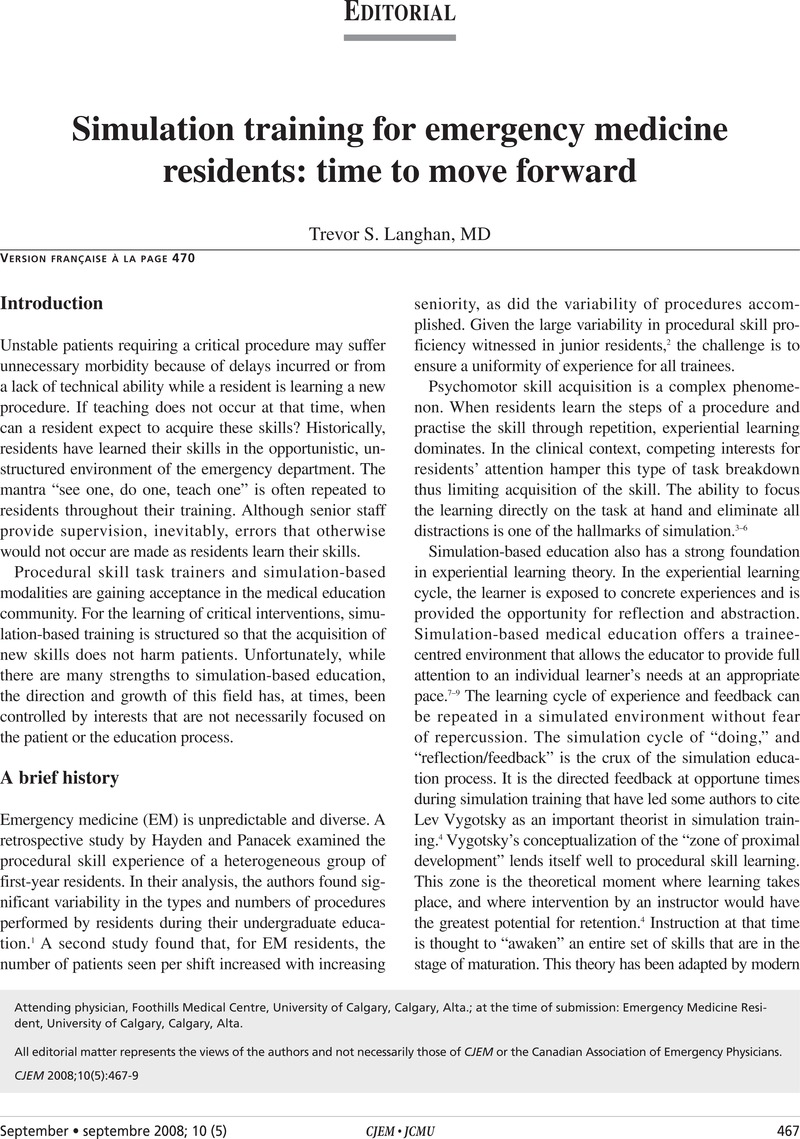Crossref Citations
This article has been cited by the following publications. This list is generated based on data provided by Crossref.
Parsons, Thomas D.
and
Courtney, Christopher G.
2011.
Human-Centered Design of E-Health Technologies.
p.
208.
Stratakos, Grigoris
2012.
Contemporary Bronchoscopy Training and Assessment: A la recherche du professionnalisme perdu?.
Respiration,
Vol. 83,
Issue. 2,
p.
101.
Parsons, Thomas D.
Rizzo, Albert A.
Courtney, Christopher G.
and
Dawson, Michael E.
2012.
Psychophysiology to Assess Impact of Varying Levels of Simulation Fidelity in a Threat Environment.
Advances in Human-Computer Interaction,
Vol. 2012,
Issue. ,
p.
1.
Dagnone, Jeffrey Damon
McGraw, Robert
Howes, Daniel
Messenger, David
Bruder, Eric
Hall, Andrew
Chaplin, Timothy
Szulewski, Adam
Kaul, Tom
and
O’Brien, Terrence
2016.
How we developed a comprehensive resuscitation-based simulation curriculum in emergency medicine.
Medical Teacher,
Vol. 38,
Issue. 1,
p.
30.
Woods, Robert A.
Artz, Jennifer D.
Carrière, Benoit
Field, Simon
Huffman, James
Dong, Sandy L.
Bhanji, Farhan
Yiu, Stella
Smith, Sheila
Mengual, Rose
Hicks, Chris
and
Frank, Jason
2017.
CAEP 2016 Academic Symposium on Education Scholarship: Training our Future Clinician Educators in Emergency Medicine.
CJEM,
Vol. 19,
Issue. S1,
p.
S1.
Ji, Jackson
Langley, Bridget
Zordan, Rachel
van Dijk, Julian
Thies, Heidi Helene Graham
Brahmbhatt, Anjalee
Torcasio, Clarissa
and
Cunningham, Neil
2023.
Heart rate responses in critical care trainees during airway intubation: a comparison between the simulated and clinical environments.
BMC Emergency Medicine,
Vol. 23,
Issue. 1,





